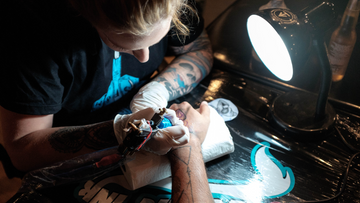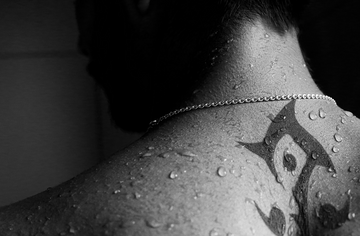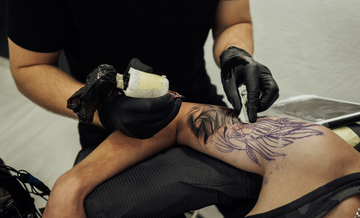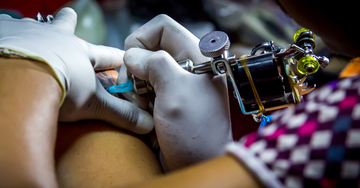Tattoos are an incredible way to express yourself, but let’s be real: they can hurt! If you’re worried about tattoo pain, don’t stress too much. With a little preparation and a few tricks, you can make the process much more comfortable. Let’s explore how to reduce the pain and make your tattoo experience as smooth as possible.
Understanding Tattoo Pain

Why Tattoos Hurt
Tattoo pain is part of the process because the tattoo machine punctures your skin thousands of times per minute to deposit ink. This action stimulates nerve endings in your skin, leading to varying levels of discomfort depending on the tattoo's location, size, and complexity.
Factors That Contribute to Tattoo Pain
Several factors can affect how much a tattoo hurts:
- Skin Sensitivity: Areas with thinner skin or more nerve endings tend to hurt more.
- Tattoo Placement: Locations close to bones or joints can amplify pain.
- Tattoo Design: Shading and intricate details usually require more time and pressure, increasing discomfort.
Pre-Tattoo Preparation for Pain Management
Stay Hydrated and Well-Rested
Hydration improves skin elasticity, making it easier for the artist to work and reducing irritation. Additionally, being well-rested helps your body cope with stress and pain.
Avoid Alcohol and Caffeine Before the Session
Both alcohol and caffeine thin your blood, which can increase bleeding during the tattoo process and make the experience more uncomfortable.
Eat a Balanced Meal Beforehand
A full stomach stabilizes your blood sugar levels, reducing feelings of lightheadedness and discomfort. Choose a meal rich in proteins and complex carbs for sustained energy.
During the Tattoo Session
Communicate With Your Tattoo Artist
Don’t hesitate to let your tattoo artist know if you’re feeling too much pain. Most artists are understanding and will allow you to take breaks when needed.
Use Numbing Cream or Spray
Numbing creams or sprays can significantly reduce tattoo pain, especially in sensitive areas. However, it’s essential to discuss this with your tattoo artist beforehand, as some may prefer not to use these products.
Practice Breathing and Relaxation Techniques
Deep breathing exercises can help calm your nerves and distract you from the pain. Inhale deeply for a count of four, hold for four seconds, and exhale for four seconds. This simple technique works wonders for many.
Choosing the Right Tattoo Placement

Areas of the Body That Hurt Less
If you’re worried about pain, consider placing your tattoo on areas with more muscle or fat, such as:
- Upper arms
- Thighs
- Calves
These spots tend to hurt less because the needle doesn’t come into contact with bones or dense nerve endings.
Areas to Avoid if You’re Pain-Sensitive
If you’re new to tattoos or have a low pain tolerance, you might want to steer clear of:
- Ribs
- Ankles
- Spine
- Fingers
These areas are notorious for being some of the most painful spots for tattoos.
The Role of the Tattoo Artist
Experience and Technique Matter
An experienced tattoo artist knows how to minimize pain by adjusting their technique. For instance, they may use lighter pressure in sensitive areas or work more efficiently to reduce the time spent under the needle.
Choosing an Artist Who Prioritizes Client Comfort
Look for an artist with a reputation for being gentle and attentive. Reading reviews or asking for recommendations can help you find someone who prioritizes making the experience as painless as possible.
Aftercare Practices for Pain Relief
Soothe the Skin With Cool Compresses
Applying a cool compress to the tattooed area can help reduce swelling and numb the pain. Be sure to use a clean cloth and avoid direct ice contact with the skin.
Use Fragrance-Free Lotions or Ointments
Aftercare products are essential for keeping your tattooed skin moisturized and irritation-free. Choose a gentle, fragrance-free lotion or an ointment recommended by your artist.
Psychological Tricks to Reduce Pain
Focus on the Final Result
One way to endure tattoo pain is by visualizing the finished piece. Remind yourself of the meaning behind the tattoo and how beautiful it will look once it’s done.
Bring Distractions (Music, Podcasts, or a Friend)
Distractions can make a world of difference. Bring headphones and listen to your favorite music or podcasts to take your mind off the pain. If your artist is okay with it, having a supportive friend accompany you can also help.
FAQs About Reducing Tattoo Pain
-
Do tattoo numbing creams really work for tattoos?
Yes, tattoo numbing creams can reduce tattoo pain, especially for sensitive areas. However, their effectiveness depends on the product and proper application. -
What should I wear to reduce tattoo discomfort?
Wear loose, comfortable clothing that allows easy access to the tattoo area and doesn’t rub against fresh ink. -
Can certain medications help with tattoo pain?
Over-the-counter pain relievers like ibuprofen can help reduce inflammation and discomfort. Always consult your tattoo artist or a healthcare provider before taking any medication. -
How long does tattoo pain last?
Most of the pain subsides within a day or two, but the area may remain sensitive during the healing process, which takes about 2-4 weeks. -
Is tattoo pain a sign of a problem?
Some pain is normal, but severe or prolonged pain, redness, or swelling may indicate an infection. If this occurs, consult a healthcare provider immediately.





